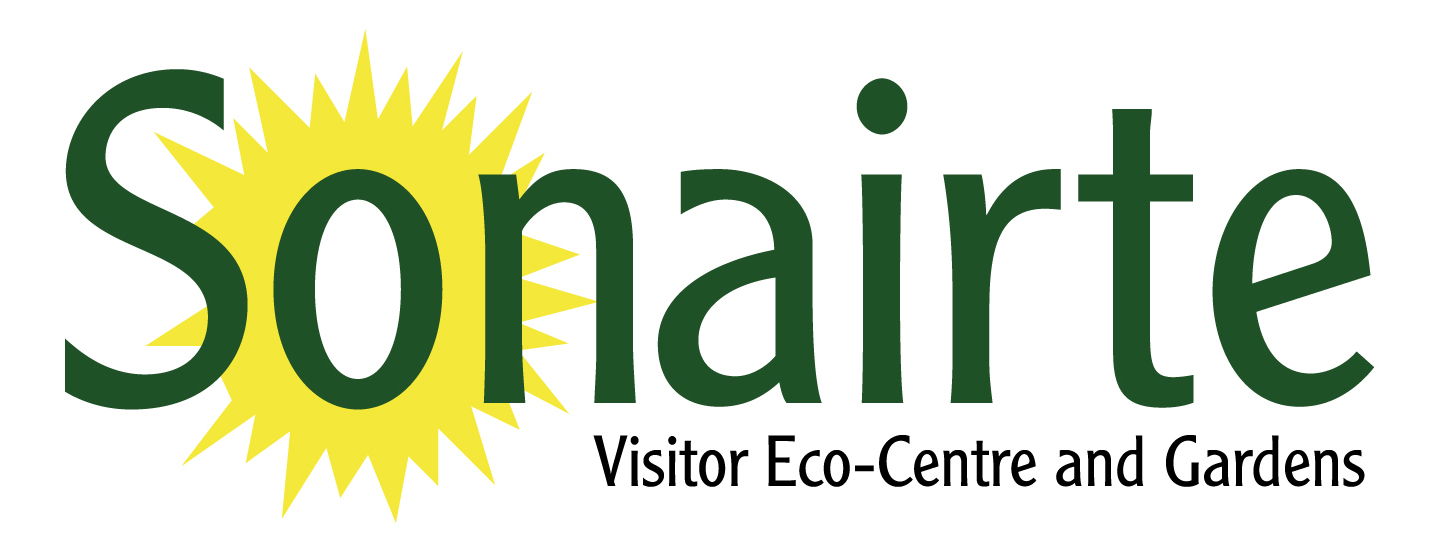The nature trail and river walk at Sonairte can be enjoyed on two different levels – either as a simple stroll through delightful scenery, with enough slopes and steps to give a gentle workout, or as a remarkable opportunity to look at the biodiversity of a wide range of habitats within a limited time span.

The Nature Trail in Summer
Moving from Sonairte’s vegetable garden onto the nature trail, you leave behind our well tended veg to encounter another world of nature’s delights. Walking to the river under the ash trees, you can see the mosses and lichens clinging to the garden wall and the woodland understorey. To the right is an old meadow, which has been in permanent pasture since the nineteenth century. On reaching the river Nanny, which is tidal at Sonairte, you leave behind the trees and grasses, meeting salt marsh and mud flats which are home to wide variety of bird life. Our resident ducks will greet you (or fly away, depending on how loud you are!) at all times, but during the winter we get a whole range of wading birds from northern Europe. At this time of year, coming into the summer, Shelduck breed on the banks, and Heron and even Little Egrets can often be seen fishing.
 River View  River Walk in Autumn |
 Funghi on the Nature Trail  Bird Hide over Saltmarshes |
At this point the river banks are tree-lined with mostly native trees and shrubs, though some foreigners have found their way in over the centuries. The path then skirts the tree-covered rath where native trees such as holly, elm and thorn combine with more recent arrivals such as horse chestnut and sycamore. Oaks have been planted here to commemorate deceased friends of Sonairte. In the understorey one can find, in their season, violets, primroses and wild strawberries and the St. George’s mushroom, which appears every year on St. George’s Day, April 23rd.

Sycamore Seeds
From here there is a magnificent view across the water meadows of the Nanny to Ballygarth Castle. Following the path back down to the river brings you to the bird hide, from which you can watch unobserved as birds and small mammals check out the river. There’s two different types of salt marsh here, and the freshwater marsh area where yellow flag iris and bulrushes bloom in season.

Autumn Leaves

Wild Yellow Flag Iris

Bird Hide Overlooking the River Nanny

Ballygarth Castle, Julianstown
The path then ascends steep steps to the remnants of human habitation, a late iron age/early Christian period rath. Unfortunately this was used for quarrying in times past and only a small area of the defences remain, but the quarry has provided more habitats to increase the diversity of the plant life.
From the summit you can sit on the memorial seat to a former Sonairte manager and look out over the Nanny estuary to the east, taking in the view over Sonairte to the chamber tomb said to be the burial site of Cuchulain’s charioteer and over Laytown to the sea.
Moving on from here you pass a quiet green dell, shaded by a giant beech tree and follow the clipped hawthorn hedge back to the centre. Here you can return to the Sunflower Café for a well deserved coffee or lunch, and visit our Eco-Shop to pick up fresh veg, gifts or a souvenir of your trip to Sonairte. There’s also an opportunity to look at our hedge, which has been constructed using the traditional “laying” method. This is has been created as part of a series of courses in hedge management run by the Hedge Laying Association of Ireland in conjuntion with the Sonairte education programme.
We’re making our hedge very gradually so that all the different stages in hedge restoration can be seen side by side, but this slow approach also has advantages for wildlife, allowing plants and animals to adapt as we create a new habitat. The applicability of this kind of approach for the biodiversity that surrounds us, farmers, and even urban dwellers, quickly becomes obvious.
We hope that you enjoy your visit to Sonairte’s fantastic nature trail.
